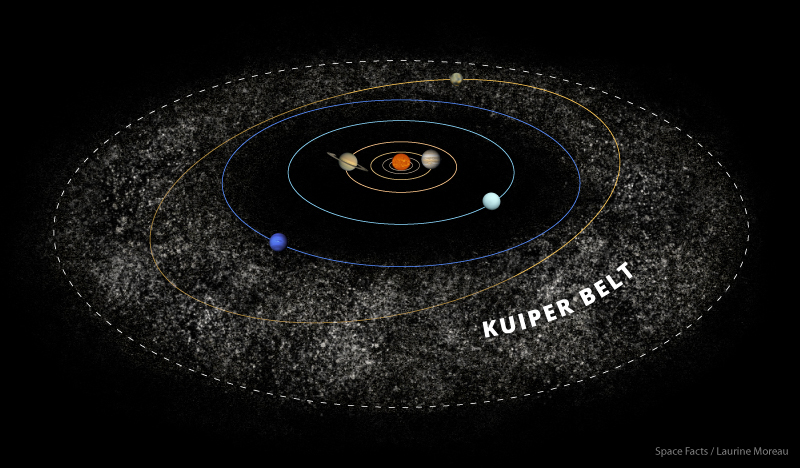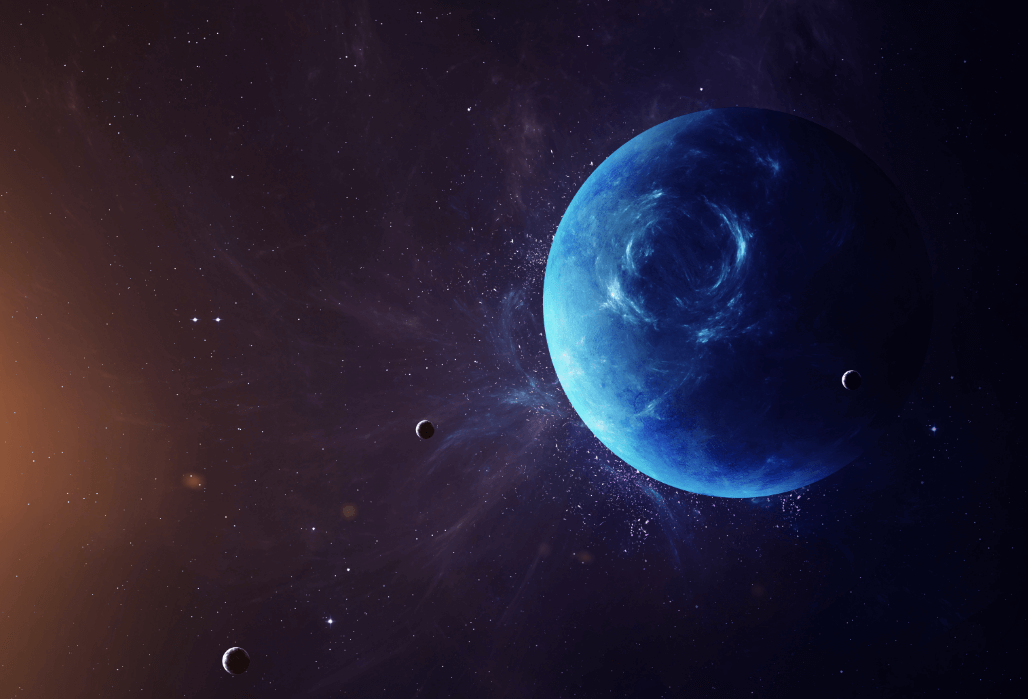Using two world-class telescopes, the Frederick C. Gillett Gemini North Telescope and Canada-France-Hawaii Telescope (CFHT), simultaneously, Dr Wes Fraser and his team conducted a unique study. Their research focused on the Kuiper Belt, which is a vast region of space situated beyond the planet Neptune which is known to hold more than 1,700 icy objects that have been left behind following the early formation of the Solar System.
Objects normally formed in this area are red in color, but during the study, Dr Fraser observed a number of strange objects that stood out as being uniquely blue and whizzing around in binary pairs orbiting one another. Originally astronomers belied these objects to have formed in the heart of the Kuiper Belt, but this new research suggests they more likely formed much closer to the Sun and were then nudged into orbit by Neptune’s gravitational force.

With thanks to Fraser’s research, we now know that Neptune experienced a very calm and slow transition when it moved from 20 AU to where it is now at 30 AU. “This research has opened the window to new aspects of understanding the early stages of planet growth. We now have a solid handle on how and where these blue binaries originated,” states Fraser.
He also commented, “There has been some evidence around how Neptune moved outwards to 30 AU. Our hypothesis about how these blue binaries came to be where they are requires that Neptune’s migration was largely a smooth and calm movement.” Meg Schwamb is an astronomer at the Gemini Observatory and she said, “Working closely together, Gemini North and the Canada-France-Hawaii telescopes coordinated their movements to observe the Col-OSSOS Kuiper belt objects at nearly the same time. These simultaneous observations on Maunakea allowed us to measure the light from the same side of the Kuiper Belt object, removing one of the main challenges in studying Solar System bodies that rotate
More News to Read











